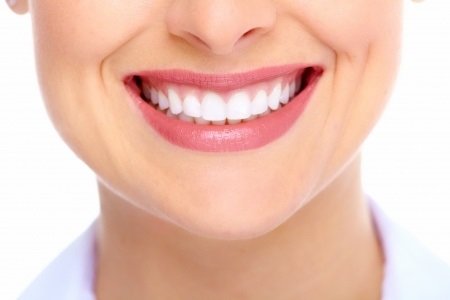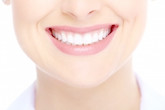The ultimate guide to risks associated with DIY teeth whitening
Everybody dreams of having white and flawless teeth, but we all known that teeth whitening treatments and similar dental cosmetic procedures can turn out to be very pricey, and not all of us may afford these treatments. This is why millions of people worldwide rely on DIY teeth whitening procedures, unaware of all the risks and dangers they expose themselves at whenever they whiten their teeth at home with certain products.
It often happens that the tips on DIY teeth whitening and the whitening kits for home use are offered by people with no dental training whatsoever, and here you will find some of the risks associated with this procedure:
Certain Substances Can Slowly And Permanently Erode The Enamel Of Your Teeth
As you may already know, the tooth enamel is the substance that covers your teeth and gives them that shiny look – without the enamel, your teeth would be exposed and they would have a matte finish rather than a glossy and beautiful one. However, the tooth enamel is not there for purely aesthetic purposes, as it is there to also protect your teeth from decay in the long haul – if the enamel becomes eroded, your teeth are more exposed to yellowing and thinning, which will make the teeth whitening procedure increasingly more difficult.
Two of the most commonly used substances for DIY teeth whitening are hydrogen peroxide and bicarbonate, the latter being a highly abrasive product. While it is true that these substances can indeed whiten your teeth by several shades and provide lasting results, it is very important to use them correctly, otherwise they can lead to the erosion of your tooth enamel. One of the most common and obvious signs of tooth enamel erosion (in addition to the visible signs) is pain – if you feel pain when you expose your teeth to sudden temperature changes or to sweet foods, then the chances are that the substances you have used for the whitening procedure have started to affect the enamel, thus making your teeth more vulnerable (1).
You Can Severely Damage Your Gums
If you use the hydrogen peroxide in a very high concentration, not only may it damage your enamel but it can also cause extensive damage to your gums, including gum infection. Any injury to your gum increases the risk for infection, which can have severe consequences both on your teeth and overall oral health, and on your budget. At the same time, this also significantly increases the risk for gum disease and heart disease – if you notice that your gums become red and inflamed or they even start to bleed right after you have whitened your teeth at home, it is important to consult your dentist right away, as you may have accidentally caused some damage to your gums.
You Can Accidentally Swallow The Teeth Whitening Substances
Although enamel erosion and gum damage are serious issues that should not be neglected, there is nothing more dangerous than accidentally swallowing the hydrogen peroxide, which can cause extensive burns to your throat and stomach. As a matter of fact, thousands of people are rushed to the hospital every year after ingesting these dangerous substances – even so, many people are not scared of the consequences and they still resort to cheap, homemade treatments for teeth whitening rather than relying on professional whitening techniques.
Increased Risk For Tooth Sensitivity And Irritation
This risk actually goes hand in hand with the accidental enamel erosion – it is a known fact that both the approved, over the counter teeth whitening treatments and the household substances people use to whiten their teeth (such as the baking soda mentioned above) put you at risk of experiencing some degree of tooth irritation and sensitivity. However, this partly depends on the teeth structure of each individual, as some people are more likely to experience sensitivity than others, depending on certain factors such as the thickness of the enamel, the overall oral health status as well as the substances that were used for whitening and their intensity. The stronger the substance (and the longer the action period), the more likely you are to experience sensitivity and irritation. Although this is not necessarily dangerous, it can surely be very bothersome in the long haul. (2)
Unapproved Teeth Whitening Procedures May Actually Have The Opposite Effect
You would be surprised to find out that certain homemade treatments for teeth whitening do not whiten your teeth but, on the contrary, they actually make them even darker than they initially were. The mechanism of action is as follows: baking soda or a highly concentrated amount of hydrogen peroxide can damage the enamel which will make your teeth attract and retain the stains at a higher degree than they normally would. In other words, if you are not careful with these DIY treatments and you are a regular consumer of teeth staining foods (such as wine, cola, coffee, tea, other types of colored soda and juices, colored candy, colored sauces and spices and so on), then you are more likely to notice an increasing darkening of your teeth over the years.
Uneven Bleaching Of The Teeth
There are countless bleaching or whitening kits available on the market, but before you rush to the pharmacy to buy one, it is very important to know that if you do not apply the substances correctly or you do not follow the instructions, this can lead to the uneven bleaching of your teeth. This means that not only will your teeth be half-bleached, but they are also significantly more predisposed to patches and spots that occur as a direct following of consuming teeth staining foods.
The Bottom Line
To summarize, these are the most common DIY teeth whitening risks that everybody should be well-aware of before trying to whiten their teeth at home. The only safe and guaranteed way to get pearly white teeth is by resorting to professional whitening treatments at your dentist’s office, as only there you can benefit from high-quality treatments applied by a licensed and experienced professional who uses only state of the art technology.
| Written by: | Michal Vilímovský (EN) |
|---|---|
| Education: | Physician |
| Image resources: | Dollarphotoclub.com |
| Published: | December 8, 2013 at 2:22 AM |
| Last updated: | March 19, 2015 at 1:55 AM |
| Next scheduled update: | March 19, 2017 at 1:55 AM |
Related articles
Get more articles like this in your inbox
Sign up for our daily mail and get the best evidence based health, nutrition and beauty articles on the web.



Ache in left arm that you should not ignore
Alkaline water dangers: why you should not drink it
How to Avoid Sleepiness While Studying?
23 Foods That Increase Leptin Sensitivity
Low dopamine (e.g. dopamine deficiency): causes, symptoms, diagnosis and treatment options
Swollen taste buds: the ultimate guide to causes, symptoms and treatment
Thin endometrial lining: causes, symptoms, diagnosis and treatment
Pimples inside nose: the complete guide
Holes in tonsils: definition, symptoms, treatment and prevention
How to deal with an ingrown hair cyst
Allegra vs. Zyrtec vs. Claritin
How to get rid of phlegm (excessive mucus) in throat? Detailed guide to medical and home remedies, symptoms and causes
What causes stomach ache after meals?
Allergy to penicillin and alternative antibiotics
Liver blood test results explained